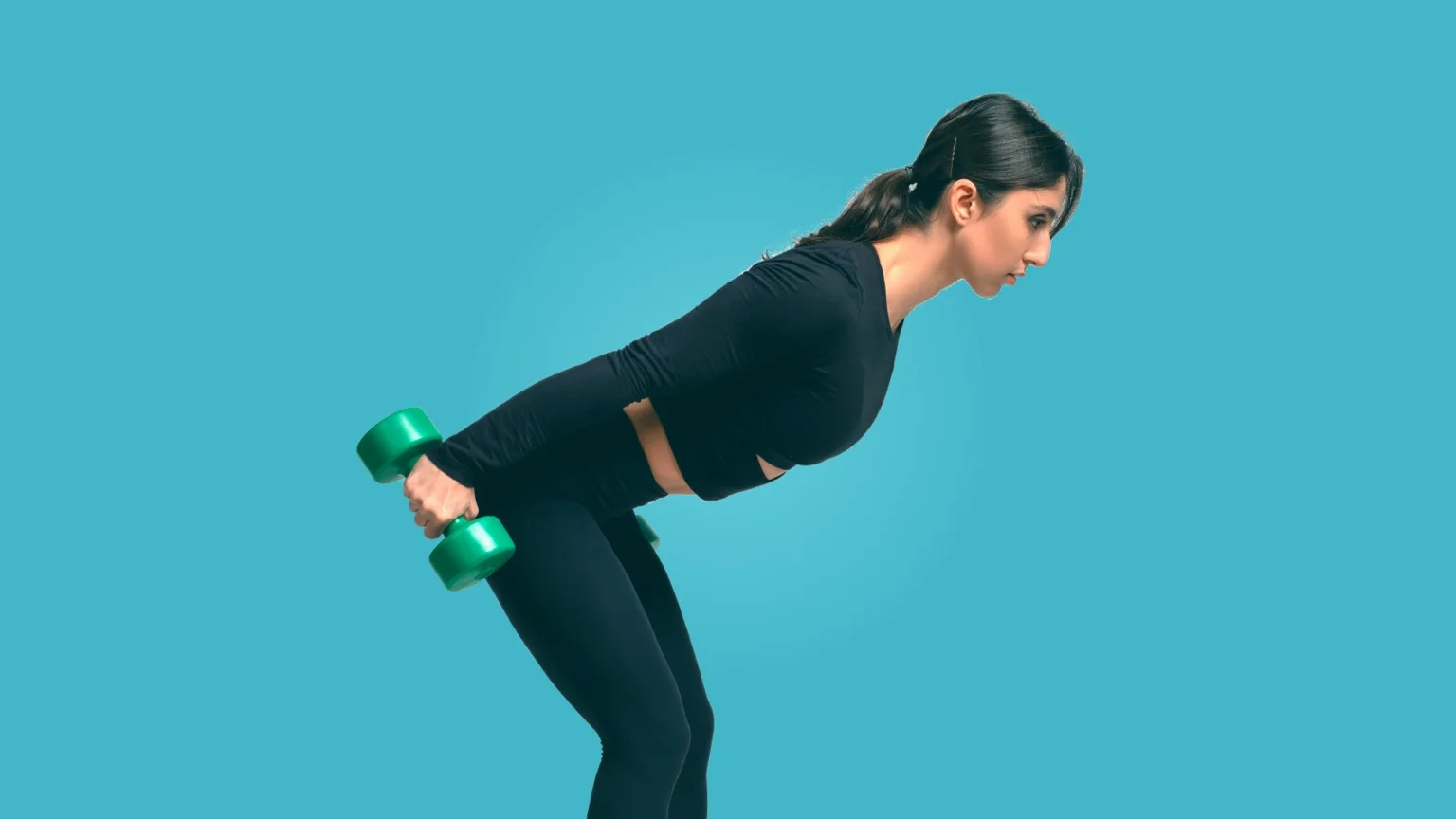
The tricep kickback is an isolation exercise that specifically targets your triceps muscles at the back of your upper arms. It is normally performed in a bent over position, either freestanding or with a bench for support. In the kickback, you hold a weight and extend one or both arms backwards in a 'kicking' movement.
Although the traditional tricep kickback uses dumbbells, it's also possible to do kickbacks using a resistance band or cable machine. In this guide, we explore 7 different variations of the tricep kickback.
Jump to
- Dumbbell tricep kickbacks
- Cable tricep kickbacks
- Bent over tricep kickbacks
- One arm tricep kickbacks
- Plank tricep kickbacks
- Resistance band tricep kickbacks
- Prone incline kickbacks
Tricep kickbacks vs other tricep exercises
There are many exercises to choose from to target your triceps. The tricep kickback is an isolation exercise that specifically works your triceps. It is one of the three key tricep isolation exercises, alongside tricep extensions and tricep pushdowns.
Many compound exercises, including tricep dips, also target your triceps as a primary muscle.
But how do tricep kickbacks compare to these exercises?
- Tricep kickbacks vs tricep extensions - The tricep extension involves you lower a weight behind your head or extending your arms down, while keeping your upper arm fixed. It's also an effective triceps isolation exercise and one benefit is that you can lift a heavier weight than is possible with tricep kickbacks. It does come with a higher risk of injury, because the extension can put a lot of stress on your elbows. In contrast, tricep kickbacks put less stress on your elbows and can be a safer option than extensions.
- Tricep kickbacks vs tricep pushdowns - Tricep pushdowns are another isolation exercise that targets your triceps. They are performed on a high pulley machine and involve pushing a bar or handle down towards the body. While pushdowns are an effective exercise, they require access to gym equipment, so not a good option if you prefer to workout at home. Tricep kickbacks, however, can be performed with just a pair of dumbbells, making them a more accessible exercise.
- Tricep kickbacks vs tricep dips - While tricep dips are an excellent exercise for your triceps, they can be challenging for beginners or those with shoulder issues. The exercise places significant stress on the shoulder joints, which can lead to discomfort or injury if not done correctly. Tricep kickbacks are easier on your shoulders, making them suitable for all fitness levels.
Triceps muscle
The tricep kickback primarily targets your triceps muscle.
Your triceps are at the back of your arm, and play a particular role in pushing movements. The triceps have three heads, known as the long head, the lateral head, and the medial head.
- Long Head – The long head of your triceps originates from your scapula. This head helps with extension at the elbow and also adduction and extension at the shoulder joint. It runs down the back of your arm to your ulna (the long forearm bone).
- Lateral Head – The lateral head originates from your humerus. It is positioned on the outside of your upper arm and gives your tricep its unique ‘horseshoe’ shape and width. It inserts into the olecranon process of the ulna. The lateral head allows rapid and forceful arm extensions, and is key in any pushing or punching movement.
- Medial Head – The medial head originates from your humerus to your ulna, and plays a key role in precision movements and stability.
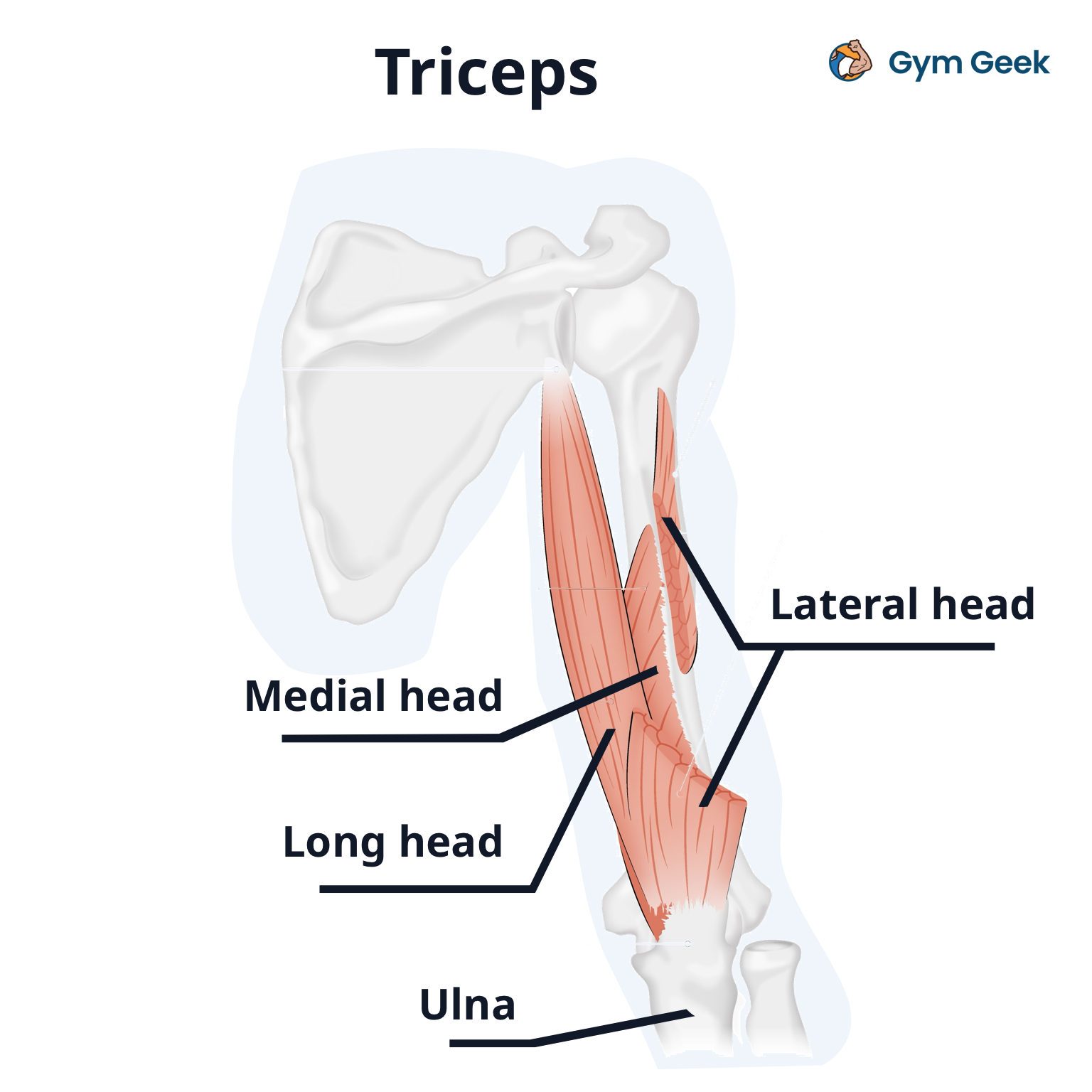
The triceps are primarily responsible for the extension of the elbow joint, which allows the arm to straighten.
Dumbbell tricep kickback

The tricep kickback primarily targets your triceps muscle, which is the muscle that runs along the back of your upper arm.
You can add tricep kickbacks to your push day workout or full body workout. It's worth having an isolation exercise in your routine that specifically targets your triceps. This can help you develop arm and comprehensive upper body strength.
In the traditional variation of this exercise, you work using dumbbells in either a standing or bent over position. You can use a bench to provide additional stability, by resting one knee on the bench and performing the kickback with the arm on the other side of your body.
Using a bench for support allows you to focus solely on your triceps, and you may be able to lift a heavier weight this way.
How to do
- In a bent over position, place your left knee and left hand on a training bench.
- Hold a dumbbell in your other hand. Your forearm should be pointing straight down, with your elbow bent at a 90 degree angle behind you.
- Extend your arm straight back until it is parallel with the floor.
- Pause at the top of the movement.
- Finally, lower the dumbbell back to the starting position. Ensure your upper arm is stationary through the entire range of movement.
- Repeat for the desired number of reps, then switch to your other side.
Sets and reps
For general muscle building and toning, we recommend 3-4 sets of 8-12 reps per arm. You can do fewer reps with a higher weight to focus on strength. Or, to emphasize endurance, use a lighter weight and increase the reps to 12-15.
Cable tricep kickbacks
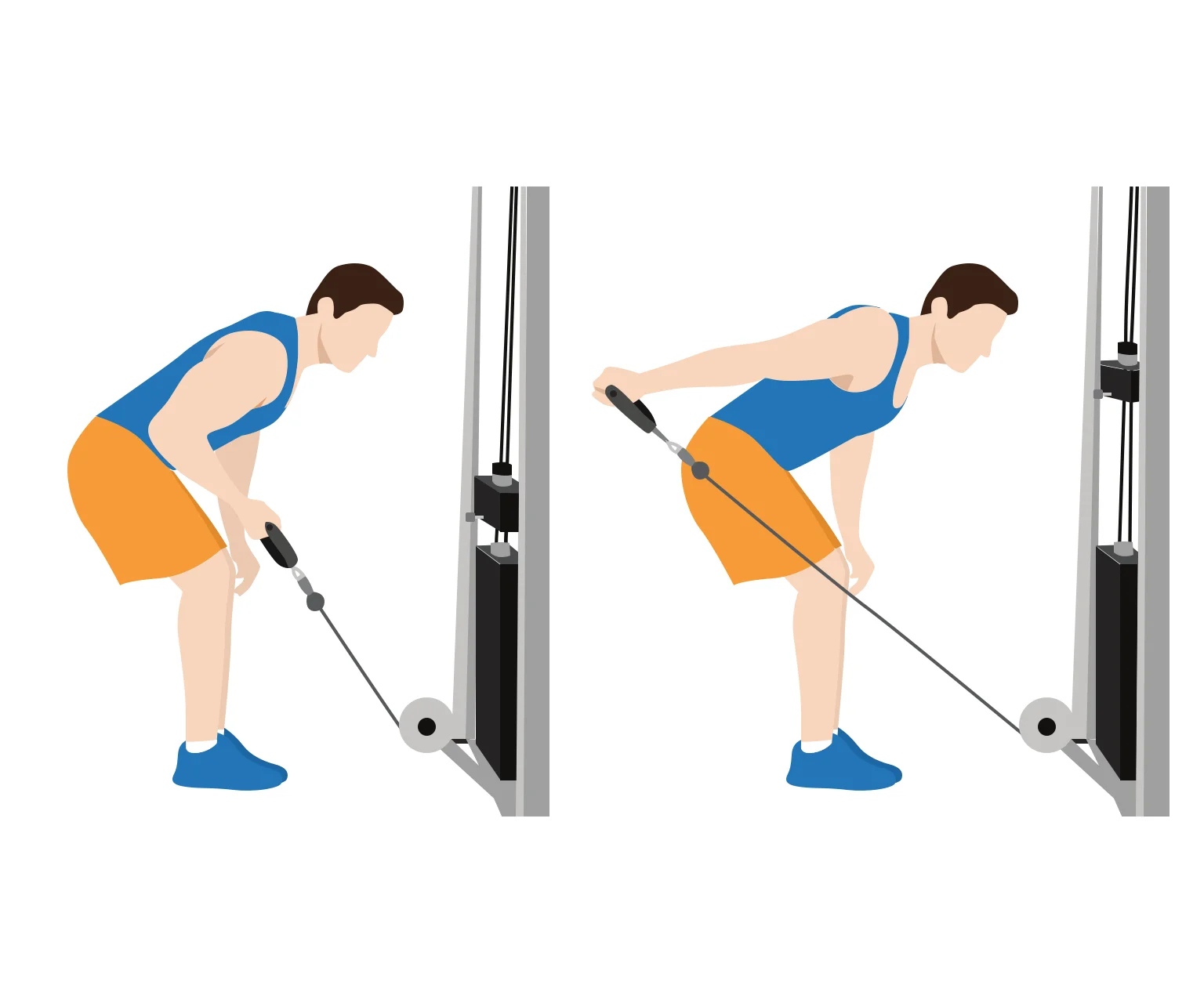
Another popular variation for tricep kickbacks is the use of a cable machine. A cable machine provides a constant tension, which can allow you to lift a heavier weight compared with free weight versions of this exercise. In turn, this can help you achieve increased muscle size and strength gains.
How to do
- Set up a low pulley cable with a handle attached.
- Stand facing the machine and grab the handle with one hand. Hinge at your hips, keeping your back straight.
- Take a step back to ensure there is tension in the cable. Keep tension in the cable through the entire range of motion.
- Without moving your upper arm, extend your arm backwards until it's fully extended.
- Pause for a moment, then slowly return to the starting position.
- Repeat for the desired number of reps, then switch to your other arm.
Bent over tricep kickbacks
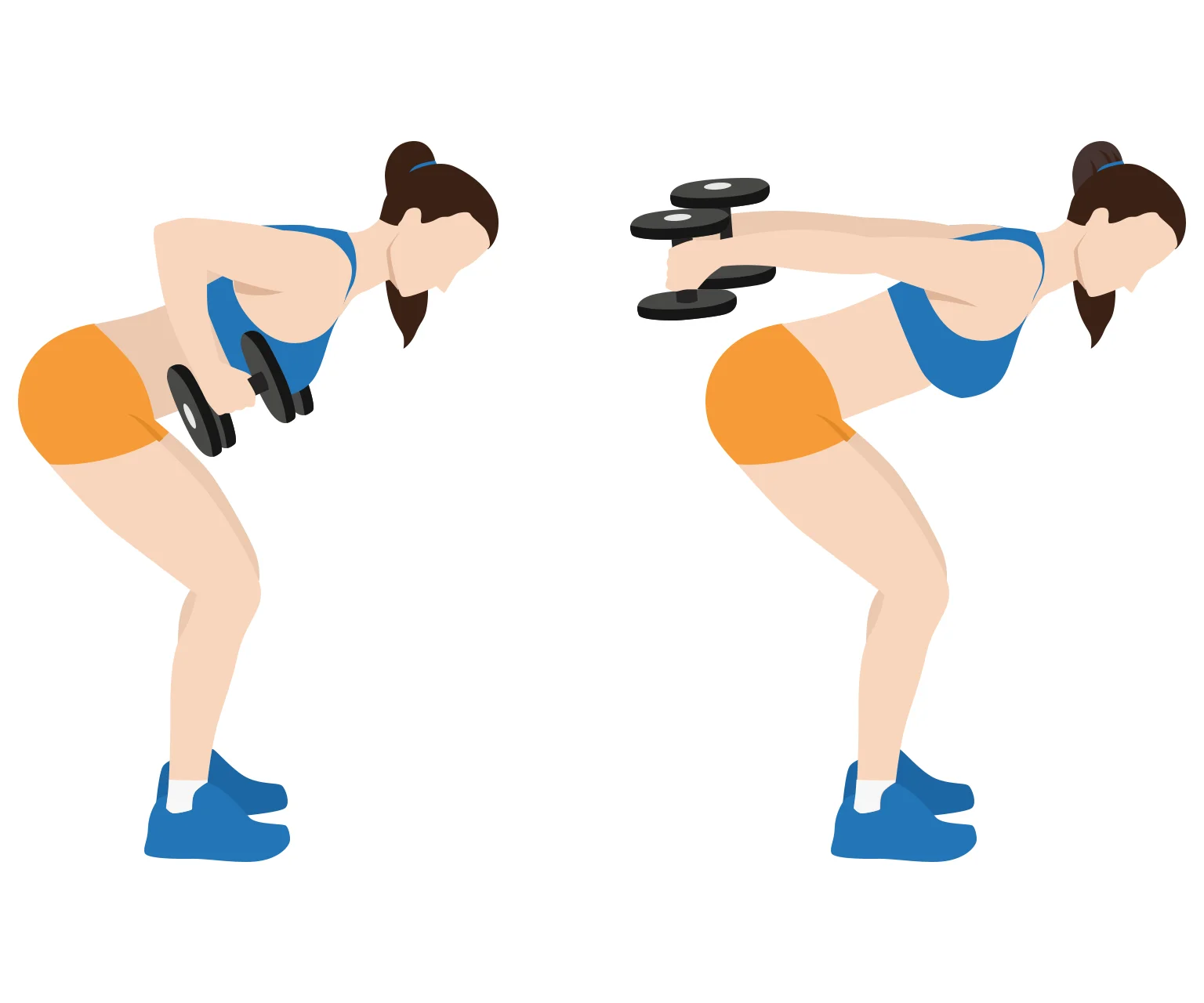
In the bent-over tricep kickback, you first take a position similar to the bent over row. Instead of rowing, you kickback the dumbbells. This variation demands more core stability and balance compared with the standing tricep kickback.
How to do
- Stand with your feet hip-width apart, holding a dumbbell in each hand.
- Bent your knees slightly, then hinge forward at your hips. Keep your back straight, and bend until your torso is almost parallel with the ground.
- Pull up your elbows so your upper arms are parallel (or slightly beyond) with your body. Your forearms should be pointing to the ground.
- Now, extend your arms straight back by contracting your triceps.
- Pause briefly at the top of the movement.
- Finally, lower the dumbbells back to the starting position.
- Repeat for the desired number of reps.
One arm tricep kickbacks
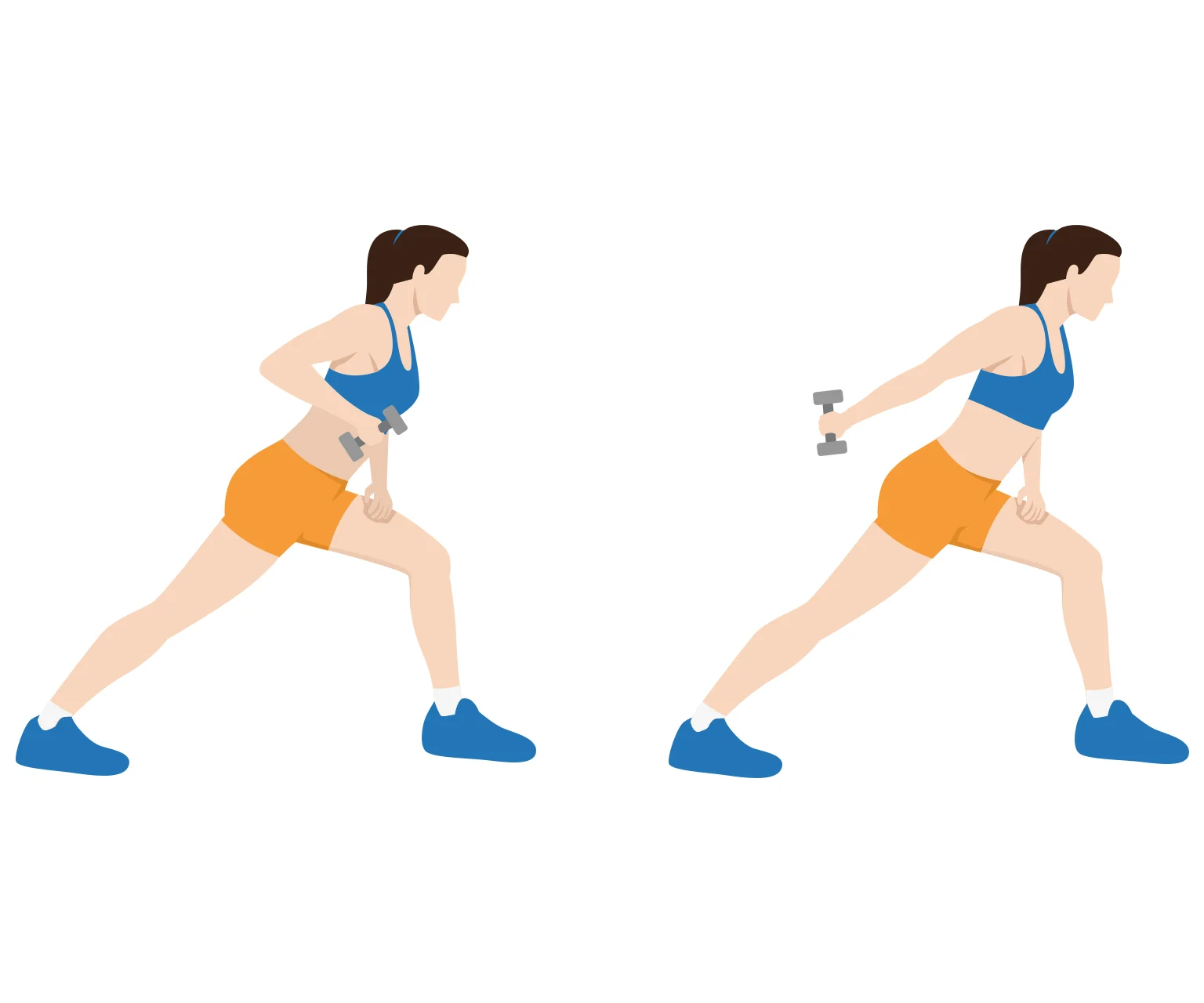
The one arm tricep kickback focuses on one arm at a time, allowing you to fully concentrate on the muscle being worked with proper form. Performing one arm tricep kickbacks can lead to improved muscle balance and symmetry.
How to do
- Take a step back with your right leg and bend your left knee. At the same time, lean your torso forwards from your waist, keeping your straight.
- Hold a dumbbell in one hand, and bend your elbow so you upper arm is almost parallel to the ground. Your elbow should be at a 90 degree angle in the starting position.
- Without moving your upper arm, extend your arm back until your entire arm is straight.
- Squeeze at the top of the movement.
- Finally, slowly lower the dumbbell back to the starting position.
- Repeat for the desired number of reps, then switch to your other arm.
Plank tricep kickbacks

The plank tricep kickback is much more challenging variation, and may be suitable for intermediate to advanced trainees. This exercise requires good core strength and balance skills which beginners may lack.
Plank tricep kickbacks not only strengthen and tone your triceps, but they also improve your core strength, stability and overall coordination.
How to do
- Start in a high plank position with your hands directly under your shoulders. You feet should be spread apart.
- Hold a dumbbell in your left hand. Keep your elbow close to your body.
- Extend your left arm backwards until it is parallel with the floor.
- Pause for a moment.
- Finally, return your arm to the starting position.
- Repeat for your other arm.
Resistance band tricep kickbacks

The main difference between traditional dumbbell kickbacks and the resistance band tricep kickback is the tension provided during the exercise. Resistance bands provide an increasing tension through the movement, making your triceps work harder. This can lead to improved muscle strength and tone, particularly if you are starting from minimal tricep mass.
How to do
- Stand on the center of a resistance band with your feet shoulder-width apart.
- Hold the ends of the band in each hand. Hinge forward from your hips so your torso is almost parallel with the ground.
- Keeping your elbows close to your body, bend your arms so they form a 90 degree angle.
- Extend your arms straight back until they are fully extended.
- Pause for a moment at the peak of the contraction.
- Finally, slowly lower back to the starting position.
Prone incline kickbacks
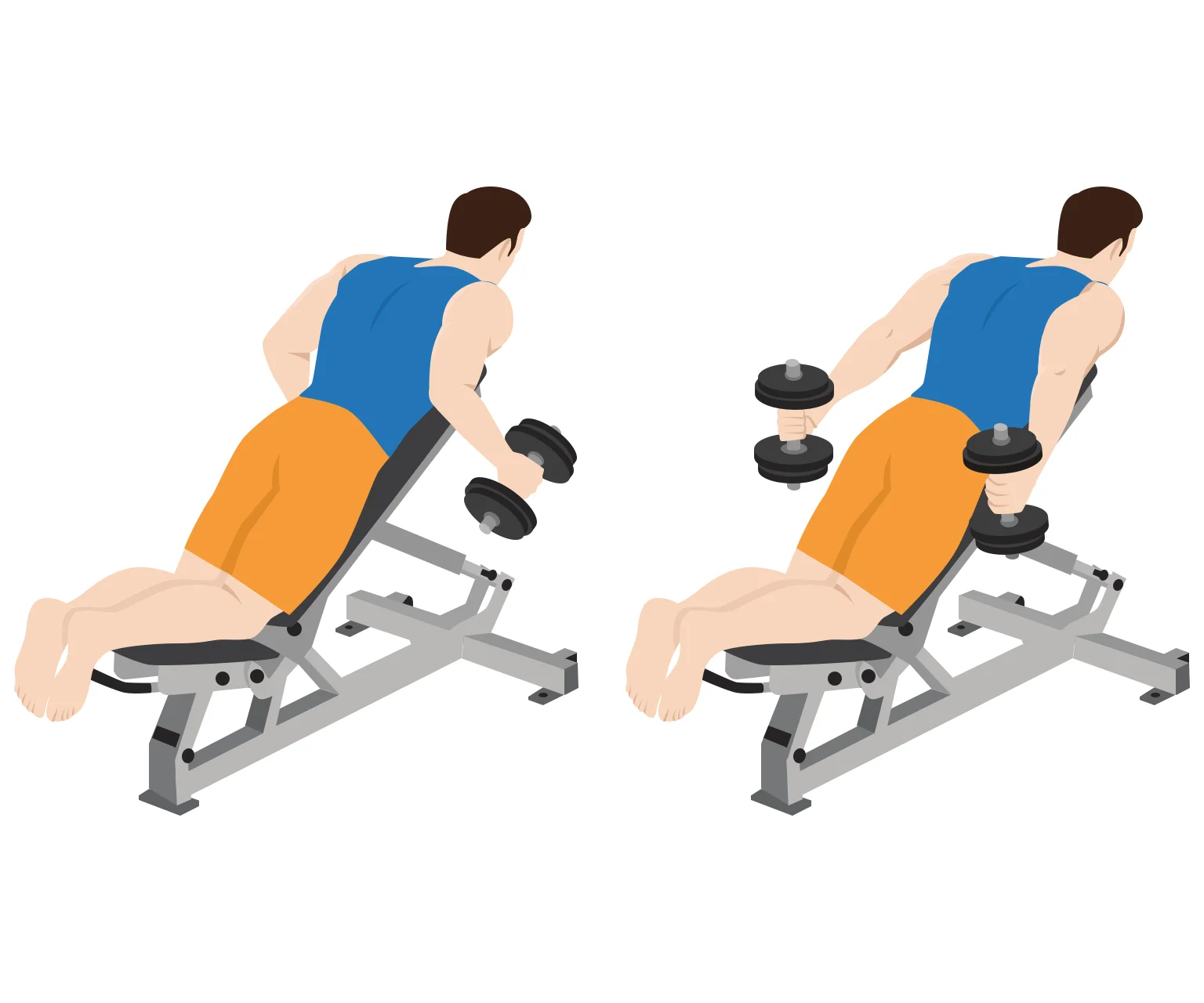
Prone incline kickbacks change the angle of the exercise and puts more emphasis on the long head of your triceps. It's a more challenging variation compared to the traditional standing or bent over kickback.
How to do
- Set an incline bench to a 45 degree angle.
- Hold a dumbbell in each hand and lie down on the bench.
- In the starting position, keep your upper arms aligned with your torso and let your forearms hang down.
- Now, extend your elbows to lift the weights until your arms are fully extended.
- Pause at the top of the movement.
- Finally, slowly lower the weights back to the starting position.
Tips
Keep your elbows high
When performing tricep kickbacks, it's important to keep your elbows high and in-line with your torso. This position helps you to isolate your triceps muscle and ensures you are not using momentum or other muscles to complete the movement.
Keeping your elbow high also ensures you are keeping the proper form, preventing potential injury.
Maintain a neutral spine
Avoid rounding or aching your back during the exercise. Maintaining a neutral spine is crucial to protecting your back.
Maintaining a neutral back is important not only for protecting your back, but it also ensures the focus on the exercise remains on your triceps.
If your spine is not neutral, you may unintentionally engage other muscle groups, reducing the effective of the exercise.
